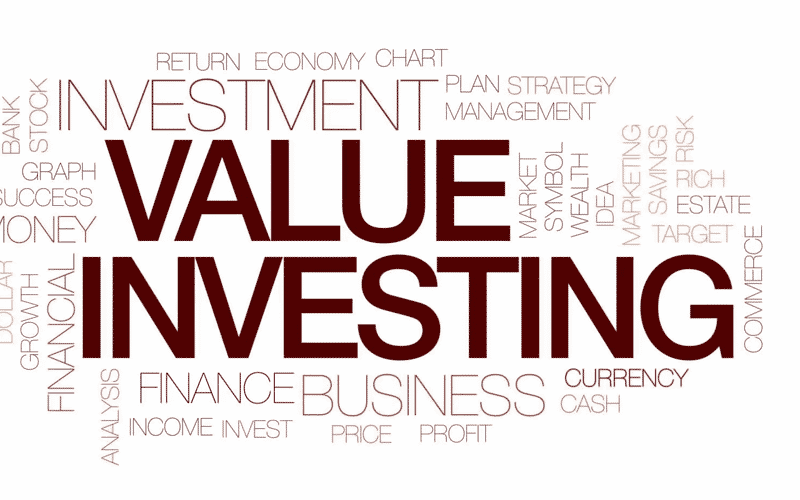Overview
The philosophies of value investing have become somewhat of a buzzword in stock markets. One of the reasons may point to Warren Buffett, a famous proponent of the concepts, much of which made him arguably the greatest investor of all time and one of the world’s wealthiest people.

He himself was a student of the ‘father of value investing,’ the late American economist, Benjamin Graham. Graham co-authored two books in the 1930s-1940s that intellectually laid the foundation of what we now know as value investing.
Since Buffett is of the oldest poster boys of this theory, many traders seek to emulate some of his success by thoroughly grasping value investing. Value investing involves the process of investing in stocks that are considered undervalued by the markets.
How value is calculated in stocks
In stocks, value investors looking for several confirmation factors that a stock will rise in value in the future despite what the price may suggest, therefore finding ‘bargains.’ When we’re looking at stocks, we see the market price, which is a reflection of what the market perceives. The perceptions of the market do not always necessarily align with the performance of the corporation in question. For example, a stock’s price might be bearish for some time, which may naturally mean that the company is doing poorly.
The market prices would reflect that the market feels bearish about the stock, though the stock itself may still be valuable for other more complex reasons. The idea of value comes into this scenario. A value investor is more concerned with the actual business and simple fundamentals like cash flow, earnings, and dividends more so than the stock’s price.
There are many different definitions of what value is regarding stock value investing, but the most associated term is intrinsic value. One of the ultimate strategies for value investing is calculating the intrinsic value of a stock. Investors would then attempt to invest in the stock when it’s below intrinsic value. Unfortunately, the models for these calculations are complex and mathematical, involving the likes of dividend discount, Gordon, and discounted cash flow models. Below is some of the simpler fundamental data that analysts tend to look at for value investing:
Price-to-earnings (P/E) ratio:
This ratio calculates a company’s share price relative to its EPS (earnings per share). So, for example, if a company’s stock price is $30, and its EPS is $5, the P/E ratio is said to be 6. The recommended value here is 9 or less as low P/E ratios indicate bargain prices.
Price/earnings-to-growth (PEG) ratio
This ratio takes the P/E ratio and compares it to the growth rate of earnings over a specific time frame. The recommended value here is less than 1.
Debt-to-equity (D/E) ratio
This ratio factors in the total liabilities divided by the total equity of a company. The goal here is to invest in companies with D/E ratios less than one; the lower the debt load, the better.
Quality rating
The Standard & Poor’s administer a quality rank known as the ‘S&P Earnings and Dividend Quality Rank,’ a letter grade given to a business using several quality factors. The grade ranks from D to A+. Analysts recommend ratings of at least B+ or better.
Dividends
Dividends are a major consideration merely because it’s guaranteed income and offers the benefit of collecting money even when a stock may be losing value. The nature of value investing is a very long waiting game. Prudent investors prefer looking at value stocks that offer dividends, which provides them an incentive to hold the stock longer even when it hasn’t yet become more valuable.
Other considerations for value investing
We’ve just listed the fundamental data that forms the backbone of value investing. However, value investing should go beyond the charts and data. While a corporation’s price to earnings ratio may look bleak, that may not necessarily be a solid reason for an investor to keep its stock out of their portfolio.
A good value investor will tend to invest in stocks of companies they fully understand and love. They will garner an active interest in learning more about the leadership of the company and making sure it’s progressive and forward-thinking. Also, they will tend to follow everything good or bad that is happening with the enterprise. In this light, value investing becomes more of a casual hobby than active trading, which is one of the reasons only select few investors employ it.
Who is suited for value investing?
The most important question regarding this topic is which individuals are best suited for value investing. Analysts continue to argue over whether intrinsic value really matters in today’s stock markets, given that old theories form the basis of the main ideologies we know nowadays. Put simply, value investing has traditionally only been reserved for true, long-term ‘buy-and-hold’ investors that intend on holding a stock for a few years or longer.
Conclusion
Value investing is a staple of what it means to be a long-term investor since trading in this manner requires one to look far beyond into the future and ignoring any short-term distractions.



